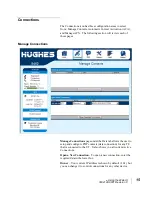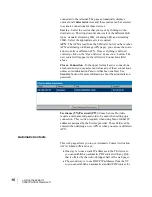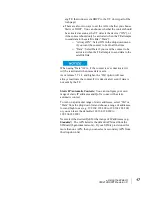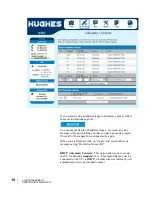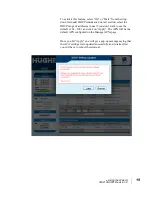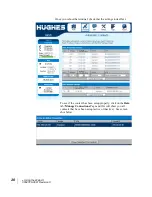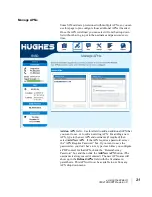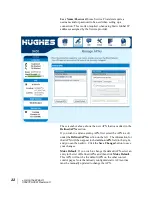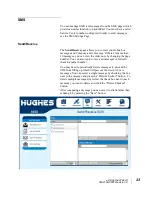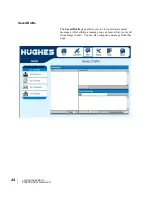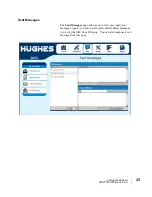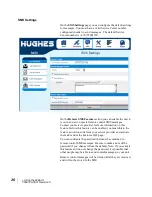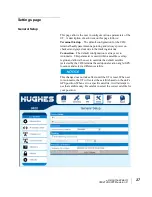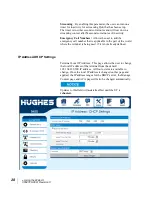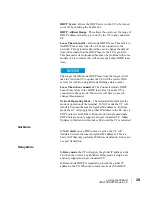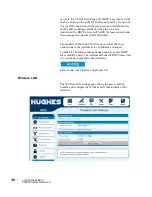
Using the Web UI
3004128-0001 Revision C
29
DHCP Server
: allows the DHCP server in the UT to be turned
on or off by checking the Enable box.
DHCP Address Range:
This allows the user to set the range of
DHCP addresses that are given out by the UT to any connected
TE.
Lease Time when idle:
Idle-mode DHCP Lease Time refers to
the DHCP lease time when the UT is not connected to the
network. This parameter allows the user to change the default
time (60 seconds) that the DHCP lease to the TE is good for.
This parameter was introduced because of a problem with some
models of Cisco routers that will not accept a short DHCP lease
time.
The longer the Idle-mode DHCP lease time, the longer it will
take the Network/UT to update the TE with the correct DNS
servers for web browsing after establishing a data context.
Lease Time when connected:
The Connected-mode DHCP
Lease Time refers to the DHCP lease time when the UT is
connected to the network. Most users will have no need to
change this parameter.
Network Operating Mode:
The Netmode field indicates the
mode of operation of the terminal. In NAT mode the UT will
translate between the local and global IP addresses. In Relay
mode the UT will supply the global IP address to the TE once a
PDP Context is established. Relay mode is single user/single
PDP Context and only supports a single connected TE.
Note:
Updates to this field will not take effect until the UT is restarted.
Nat Mode
In
NAT mode
once a PDP context is active, the UT will
translate between the local and global IP addresses. This is a
basic NAT that only performs IP address translation. It does not
use port translation.
Relay Mode
In
Relay mode
the UT will supply the global IP address to the
TE when the context is established. Relay mode is single user
and only supports a single connected TE.
In Relay mode DHCP is required to provide the global IP
address to the TE. When the context is activated, the DHCP

